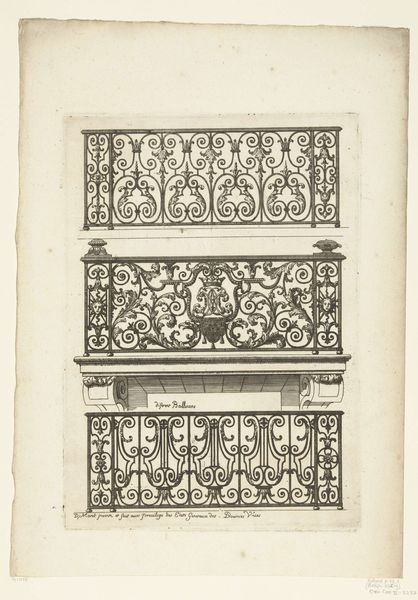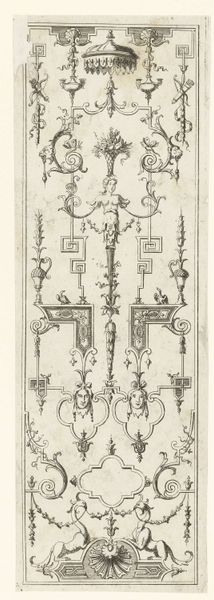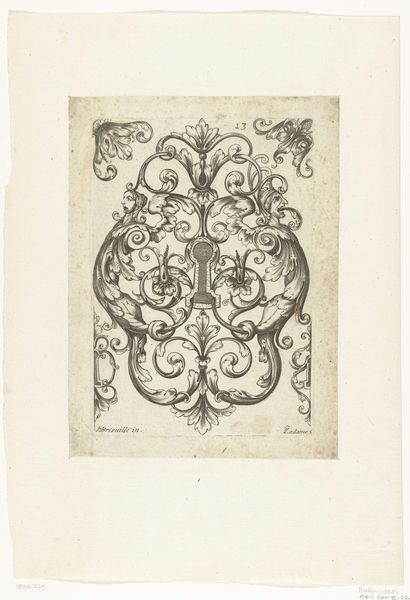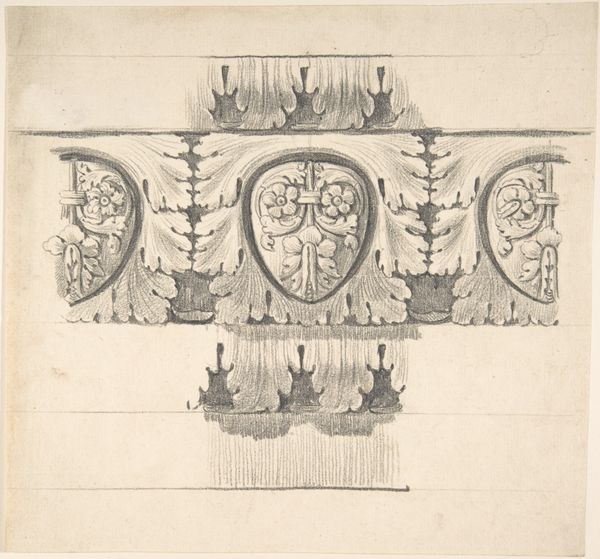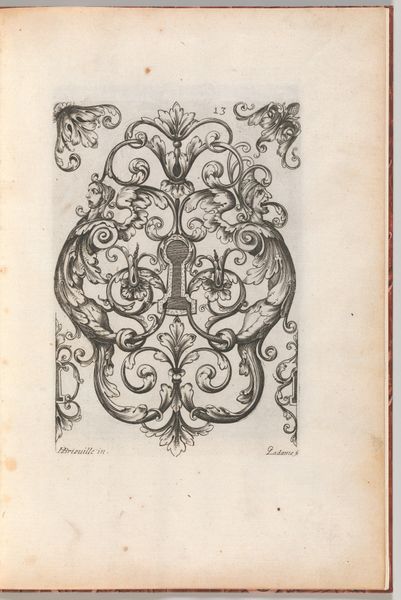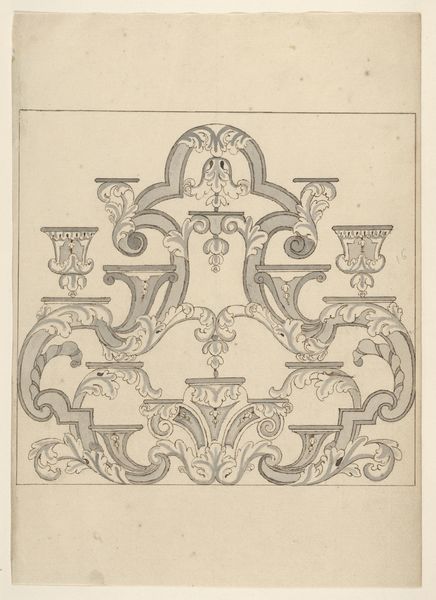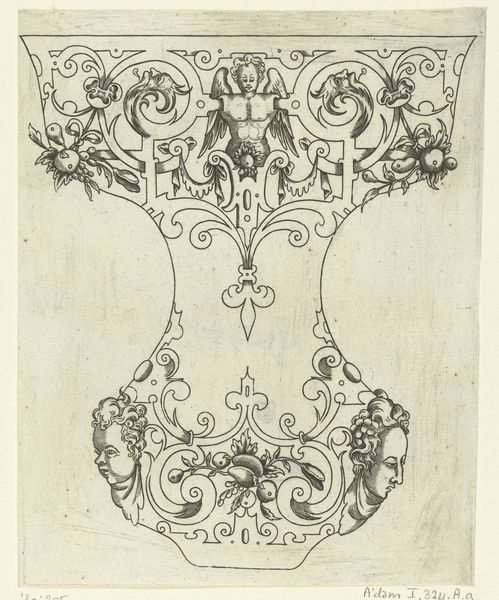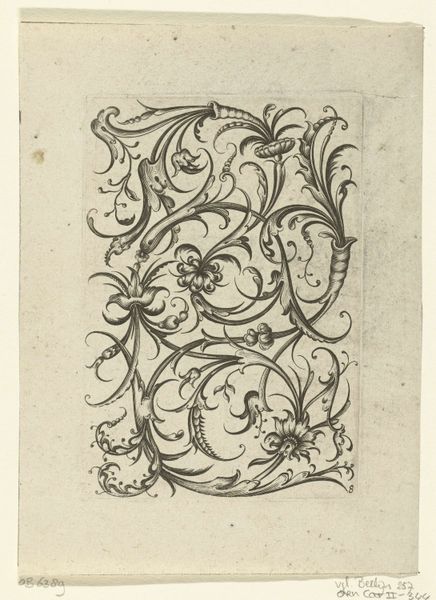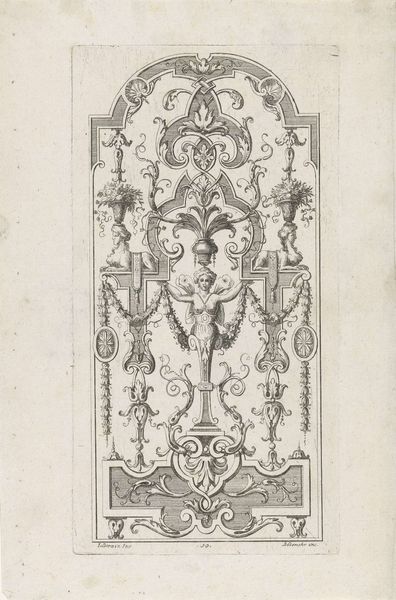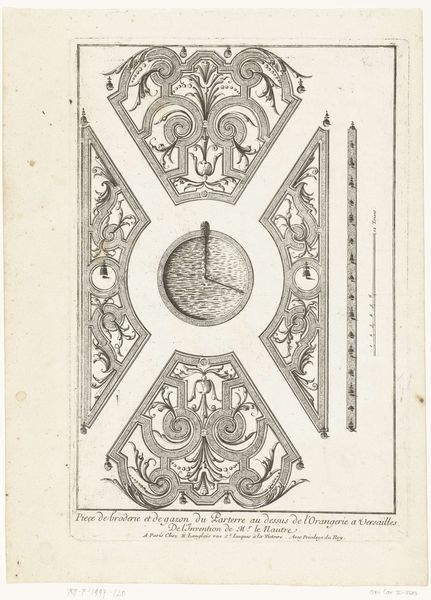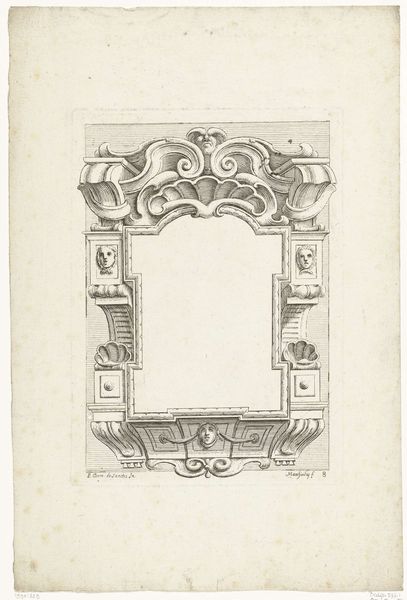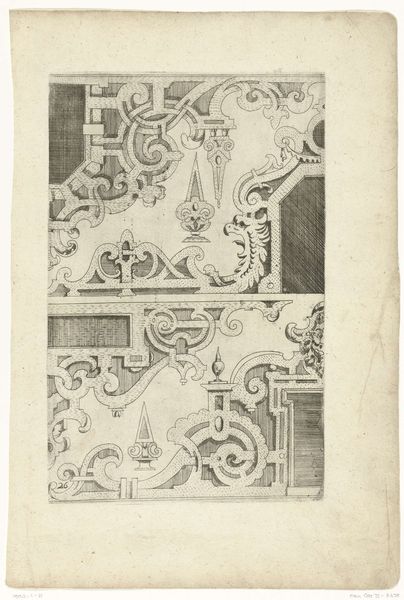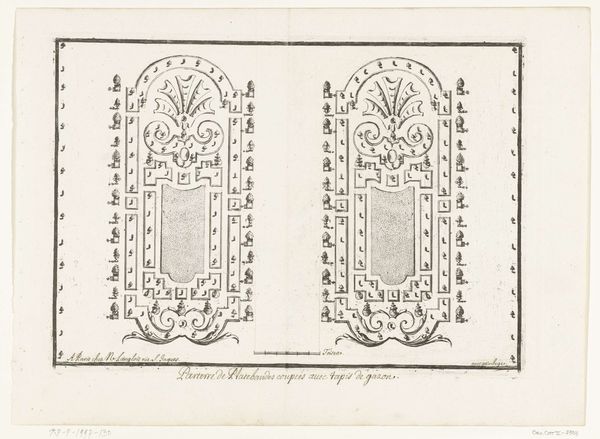
drawing, ornament, print, paper, ink, engraving, architecture
#
drawing
#
ornament
#
baroque
#
ink paper printed
# print
#
paper
#
ink
#
geometric
#
pen-ink sketch
#
line
#
engraving
#
architecture
Dimensions: height 270 mm, width 193 mm
Copyright: Rijks Museum: Open Domain
Editor: Here we have “Drie trapleuningen,” or "Three Stair Railings," a 1712 print by Daniël Marot, currently held at the Rijksmuseum. It is baroque in style and it seems like an architectural plan. How would you interpret this ornamental design, and perhaps its place within the visual culture of the time? Curator: Well, at first glance, we're seeing a detailed study of Baroque aesthetics. Marot's designs reflect a hierarchical society obsessed with displaying status through architectural details. The elaborate ironwork isn’t just decorative; it’s a deliberate assertion of power and taste. Editor: So the function of ornamentation in this work isn't purely aesthetic? Curator: Exactly. Consider the socio-political context: who commissioned such ornate designs? Probably members of the elite class aiming to visually distinguish themselves. Marot was designing spaces that reinforced social divisions. This wasn't necessarily malevolent; but, consciously or unconsciously, he participated in a system of visual messaging. Editor: I hadn't considered the potential implications of the ironwork beyond pure decoration. Curator: Think of the cost and labor required to create such intricate details. These railings embody luxury and, by extension, exclusivity. The 'unnecessary' flourishes reinforce the owner’s control over resources and artistry. Who *didn't* have access to these spaces and what stories were being told by the work? Editor: I see. This perspective has broadened my understanding of how architectural design intersects with cultural values. Curator: Art always prompts crucial questions: whose stories are being told, whose are being silenced, and who benefits from this particular representation?
Comments
No comments
Be the first to comment and join the conversation on the ultimate creative platform.
